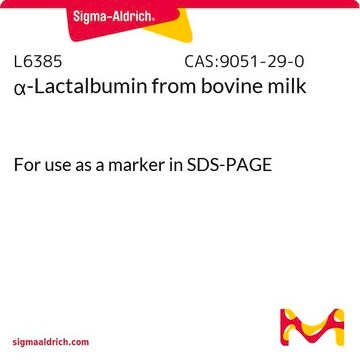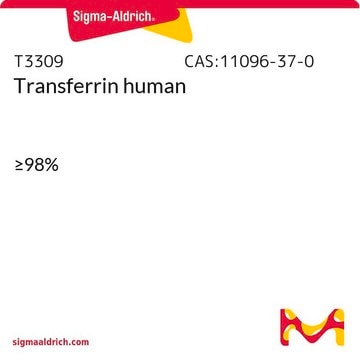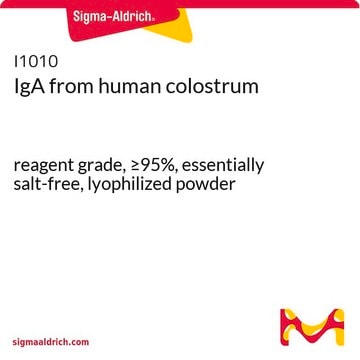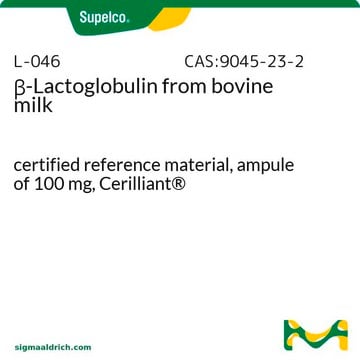L7269
α-Lactalbumin aus Frauenmilch
≥95% (SDS-PAGE), lyophilized powder
Größe auswählen
318,00 €
Versandbereit am07. April 2025Details
Größe auswählen
About This Item
318,00 €
Versandbereit am07. April 2025Details
Empfohlene Produkte
Biologische Quelle
human milk
Qualitätsniveau
Assay
≥95% (SDS-PAGE)
Form
lyophilized powder
Mol-Gew.
14,070 Da by calculation
Konzentration
>75 % protein (UV)
Methode(n)
cell migration: suitable
Löslichkeit
H2O: soluble 10 mg/mL(lit.)
UniProt-Hinterlegungsnummer
Lagertemp.
−20°C
Angaben zum Gen
human ... LALBA(3906)
Suchen Sie nach ähnlichen Produkten? Aufrufen Leitfaden zum Produktvergleich
Allgemeine Beschreibung
Anwendung
- to study the partitioning behavior of different monomeric proteins with exposure to amino acids on the protein surface[3]
- to study the interaction between α-LA and cathepsin D[4]
- to study the ability of breast milk fractions to enhance the transepithelial flux of extrinsic iron in colon carcinoma cell line
Biochem./physiol. Wirkung
Lagerklassenschlüssel
11 - Combustible Solids
WGK
WGK 3
Flammpunkt (°F)
Not applicable
Flammpunkt (°C)
Not applicable
Hier finden Sie alle aktuellen Versionen:
Analysenzertifikate (COA)
Die passende Version wird nicht angezeigt?
Wenn Sie eine bestimmte Version benötigen, können Sie anhand der Lot- oder Chargennummer nach einem spezifischen Zertifikat suchen.
Besitzen Sie dieses Produkt bereits?
In der Dokumentenbibliothek finden Sie die Dokumentation zu den Produkten, die Sie kürzlich erworben haben.
Kunden haben sich ebenfalls angesehen
Aktive Filter
Unser Team von Wissenschaftlern verfügt über Erfahrung in allen Forschungsbereichen einschließlich Life Science, Materialwissenschaften, chemischer Synthese, Chromatographie, Analytik und vielen mehr..
Setzen Sie sich mit dem technischen Dienst in Verbindung.















